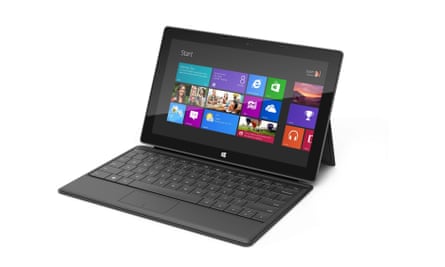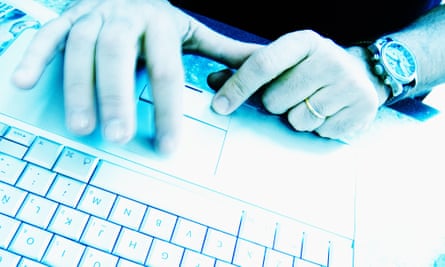I have just had to replace my 1TB hard drive, which cost £25 all done and dusted, but I notice you can now get a 1TB USB Flash drive for £8.99. Could you use one of those as a normal day-to-day drive? I will use one as a backup, but if I mirror my drive on it, could I switch over to it if my drive goes down again? Roger
I was surprised – shocked! – to discover that you could buy a 1TB flash drive for less than a tenner, because I’ve been paying more than that for 16GB and 32GB versions. As mentioned in the comments below, this is almost certainly a scam, because the old computer industry adage still applies: “cheap, fast, good – choose any two”.
The Guardian’s product and service reviews are independent and are in no way influenced by any advertiser or commercial initiative. We will earn a commission from the retailer if you buy something through an affiliate link. Learn more.
If your 1TB Flash drive reliably holds 1TB for a year or two, then it’s unlikely to be fast. You very helpfully ran CrystalDiskMark when I asked, and it put the read speed at 16.28MBps and the write speed at 6.52MBps. (On this benchmark, MBps means one million bytes per second.)
That’s middle-of-the-road for a USB 2.0 device, where the fastest can manage about 25MBps reading and 10MBps writing data. It’s a lot slower than your 1TB hard drive (88.80/82.08), which is somewhat slower than mine (127.7/122.6).
Speed does make a difference to usability, which is why people are moving to SSDs (~5x faster than HDDs) and M.2 drives (~25x faster than HDDs).
Obviously, it would be better to use a USB 3.0 flash drive, which can read data at 100MBps or more. Unfortunately, that would increase the cost dramatically. Even 256GB flash drives often cost in excess of £70, and can cost far more than that. You can get 3TB external hard drives – with 12 times more storage space – for similar prices.
Windows To Go

You can certainly mirror your existing 1TB hard drive to a 1TB Flash drive. However, I wouldn’t expect it to work if the hard drive failed, because all the code will still refer to the C: drive. At best, it might help you to get up and running after you replaced the failed hard drive, but so would keeping a back-up on an external hard drive. What you need is something like Windows To Go….
Microsoft has tried a few ways to exploit USB Flash drives. A decade ago, it introduced ReadyBoost, to increase PC performance. That didn’t make enough difference to catch on, but you could give it a whirl. It also offered Windows PE (Preinstallation Environment), which ran a minimal version of Windows from a USB Flash drive. Techies could use it to start a PC and install a new version of Windows Vista, or repair a PC if Windows failed to start. But WinPE has been superseded by WinRE (Windows Recovery Environment).
When Windows To Go appeared with Windows 8, Microsoft finally provided a supported way to run Windows from a USB memory stick. It was, in effect, a “Live USB” analogous to a “Live CD”. Microsoft suggested that people could carry around their own copy of Windows and use it with any available PC to safely log on to their corporate networks. This works reasonably well because they’re usually just reading stuff. If they have to save a lot of data, the slow write speed could be painful.
Unfortunately, Microsoft only released Windows To Go for the Enterprise and Education editions of Windows 10. However, people soon figured out ways to create Live USB sticks for other editions of Windows, even some old ones.
Today, there are several third-party programs that make the process easier. Rufus is probably the best known. (It is commonly used to create bootable Linux memory sticks.) Alternatives include WiNToBootic and WinToUSB Free.
It would require some effort, but you could create a Live USB copy of Windows, and keep your data folders up to date. That should get you back to work pretty quickly after a hard drive failure, but you’d only want to use it until you could get a proper hard drive replacement.
USB Recovery media
For most people, the simpler solution is to create a “recovery USB stick” in case your PC fails for whatever reason. This replaces the Windows Recovery DVD that some of us created for Windows 7 and earlier versions.
In Windows 10, type “create a recovery drive” into the search box and click that when it comes up. You will need a blank 16GB or preferably 32GB USB flash drive, because any existing data will be wiped. (It’s important to bear this in mind if you decide to create one on an external hard drive.) It’s very easy and relatively quick to do.
Incidentally, if you still want to create a Recovery DVD, search for Control Panel and run the utility provided with Windows 7. Go to “Control Panel\System and Security\Back up and Restore (Windows 7)” and click “Create a system repair disc” on the left hand side. The last time I did this, in Windows 7, the wizard used two DVDs, and yes, I still have them to hand.
It’s always good to have a recovery disc/USB stick. On the other hand, it’s probably quicker to make a clone of your hard drive using Macrium Reflect Free, EaseUS or similar software.
Using a USB stick as a local drive
You asked if you could you use one of your memory sticks as “a normal day-to-day drive.” The answer is yes, but it’s not particularly simple, and I don’t recommend it.
USB flash drives are marked as being removable, which means the operating system treats them differently from local hard drives. You can’t partition them, for example, and they may not always be assigned the same drive letter.

To convert a USB flash drive into a local drive, you have to change the “removable” assignment, and you may have to change the driver. If you search for the phrase “Flip Removable Bit” then you will find links to software such as Lexar’s BootIt (lexar_usb_tool.zip) that can do the job. When the bit can’t be flipped, there’s a possible software solution: the Hitachi Microdrive filter driver. Both of these are now rather old but still appear to work.
Today, however, I can’t see the point of partitioning a USB Flash drive. Both the NTFS and exFAT file systems are very efficient in terms of not wasting large amounts of storage space on small files, and NTFS is usable on any drive from 400MB to 16 exabytes. You can have separate folders instead of separate partitions.
USB Flash drives usually stick out somewhat, so there’s always a chance of knocking them, which could lead to lost data and/or file corruption. Also, USB Flash drives don’t get the benefits of Trim support, which extends the life of SSDs.
Finally, what do you gain? The whole point of a local disk is to provide fast access to unique data, which you then back up to something cheaper and slower: optical discs, an external hard drive, a USB memory stick, the cloud, or all four. If you use a memory stick as a local drive, then you get slow access to local data that you still have to back up to something else.
Have you got a question? Email it to Ask.Jack@theguardian.com
This article contains affiliate links to products. Our journalism is independent and is never written to promote these products although we may earn a small commission if a reader makes a purchase.

Comments (…)
Sign in or create your Guardian account to join the discussion